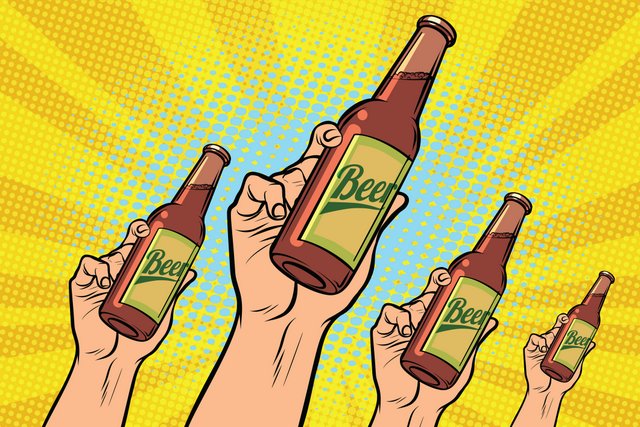
The global health crisis caused by the COVID-19 pandemic has disrupted our economy in unimaginable ways, but hey, let’s not dwell. Instead, let’s move forward. While foot traffic to taprooms and brewpubs took a tremendous hit in 2020, COVID-19 hasn’t had a completely detrimental effect on the beer industry (packaging and off-premise has soared, for instance).
If you came into 2020 and now 2021 with even the vaguest notion of expansion (new canning line, second location, winterizing outdoor areas), let’s draw up those plans financially — even as a fun exercise. Because it’s a new year, so let’s allow ourselves to dream a little. With a little flexibility and creative thinking, you might be surprised in the new ways you can take your craft brewery. The following tips can help you prepare to approach a lender for funding.
1. Evaluate yourself
Start with an assessment of your personal finances. Your personal cash reserves, net worth and cash flow are all critical pieces of information the bank will review to determine your qualification. They will also want to gather information about any debt obligations and outstanding loans. This information will be helpful in determining if you and your brewery have the capacity to take on additional debt and if you will be able to pay back what you have borrowed.
Trust is one of the greatest tools you can lean on when approaching a bank for a loan as it helps you build a mutually beneficial relationship. Be prepared to put all of your cards on the table and keep an open line of communication with your lender. Attempting to hide or cover up any financial indiscretions from your past could cost you the loan, so remember to be fully transparent — even if the numbers aren’t pretty.
Identify your primary purpose for this undertaking. Is expansion simply a desire, or will it help you reach your long-term goals? Will a second location allow you to expand distribution or begin to can your products? When you fully understand how this move will positively impact your business, you’ll be better equipped to articulate that vision to your lender.
2. Organize your materials

Loan applications can be time consuming, and you might find yourself frustrated with all the moving pieces. The best thing you can do to help minimize any roadblocks along the way is stay organized. In addition to information about your personal finances and your lender’s application, you’ll need to provide a comprehensive business plan that includes details about your brewery’s brand, how you plan to stand out against competition, a management profile and a financial forecast for your loan. Creating a comprehensive business plan could take you as long as three months.
Check, and double check, your work before submitting your application. You might even consider someone who specializes in business plan editing to proofread your work to ensure accuracy, consistency and flow. You’d be surprised at how many applicants forget to make sure that their balance sheet actually balances.
3. Be realistic
Forecasting is tedious, but accurate projections are critical to success. Be as realistic as possible and remember to include the data that explains how you arrived at your estimated figures. The bank is looking for a truthful prediction of growth, not shiny numbers that are unrealistically high.
Make sure your revenue goals are realistic as well. Take into account all of your expenses — both business and personal — and make sure you’re left with enough for you and your family to live comfortably. Perform a break-even analysis and if you find that a break-even point cannot be reached, go back to the drawing board and consider different scenarios until you reach a point where revenue equals all business costs. This might include decreasing staff, increasing your prices or working with a less expensive suppliers.
4. Remember working capital
Given the effects of today’s environment, there are a number of unique factors to account for when it comes to working capital. In addition to accounts receivable and payable, you need to have cash on hand in case of another shutdown — or complete closure — of dining in your city. If this were to happen, you could use your cash to make a bulk purchase of cans, pivot to package only selling and keep your business alive. But this is a worst-case scenario. Now might also be a good time to make small investments that could be easily covered, like heaters to encourage guests to gather outside, live entertainment or other equipment that allows guests to gather safely while adhering to social distancing rules. These investments would be minor but have the potential to pay huge dividends.
5. Ask for feedback

It would be wise to share your plan with others in your industry or a professional trained at helping small businesses before you submit it to your lender. Small Business Development Centers and financial consultants can take a real look at your numbers to make sure everything checks out, and other brewery owners can lend advice in matters of projected growth and any issues facing the industry. You could also consider connecting with a banker that specializes in craft beverage lending as they can lend expertise that is unique to your situation as opposed to a general lender that might not know the ins and outs of the industry.
Though there are months of recovery ahead of us, the economic outlook is positive and rebound is on the horizon. If you had been considering an expansion, revisit your ideas and see if jumpstarting your plan now is a possibility. With the right planning and flexibility, you just might emerge from this crisis stronger than ever.
Jason Sleeman is Vice President of Craft Beverage Lending for United Community Bank. His nearly two decades of banking experience have been primarily dedicated to community banks. Connect with him directly at [email protected].





Leave a Reply
You must be logged in to post a comment.